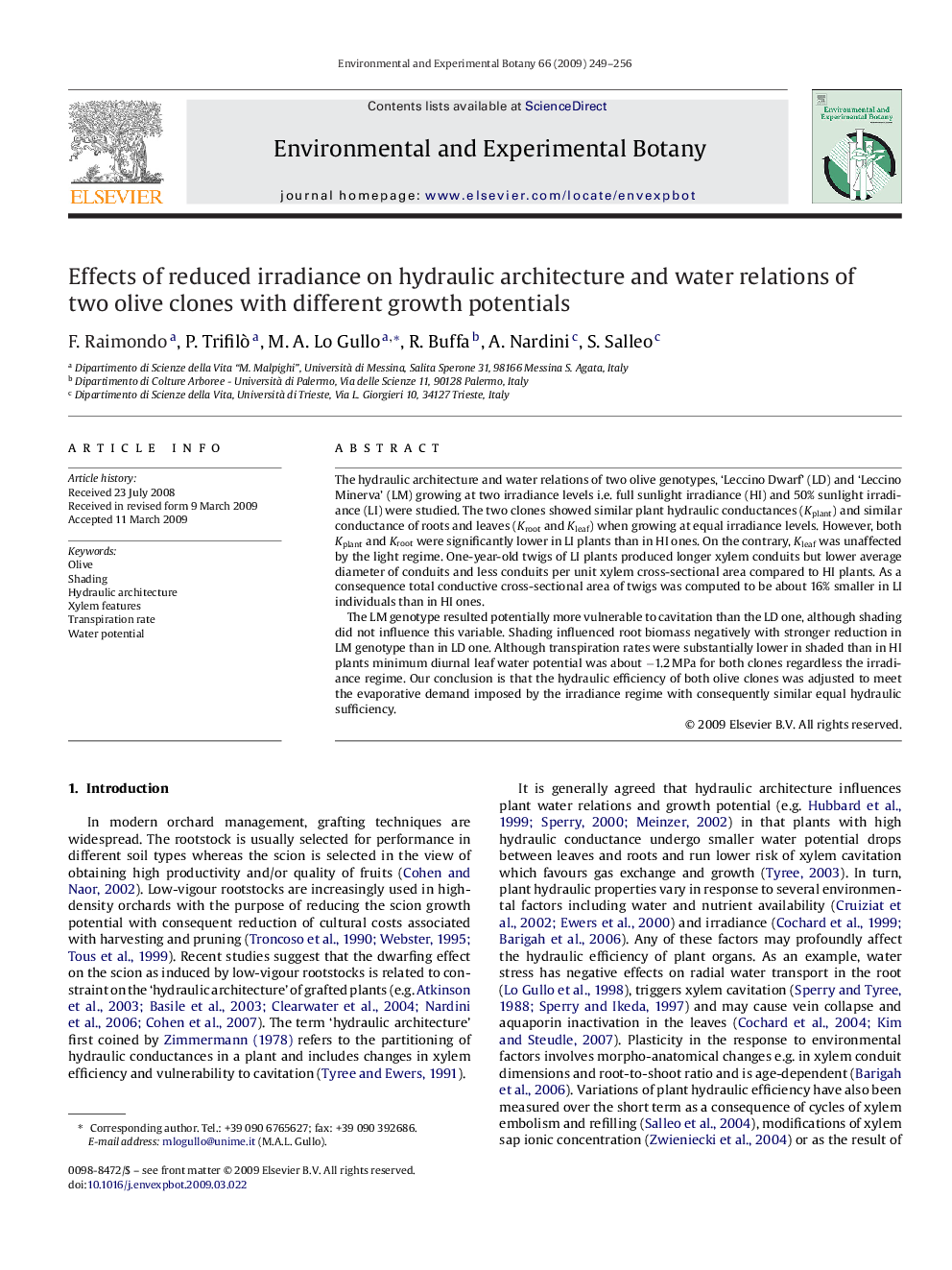| Article ID | Journal | Published Year | Pages | File Type |
|---|---|---|---|---|
| 4555119 | Environmental and Experimental Botany | 2009 | 8 Pages |
The hydraulic architecture and water relations of two olive genotypes, ‘Leccino Dwarf’ (LD) and ‘Leccino Minerva’ (LM) growing at two irradiance levels i.e. full sunlight irradiance (HI) and 50% sunlight irradiance (LI) were studied. The two clones showed similar plant hydraulic conductances (Kplant) and similar conductance of roots and leaves (Kroot and Kleaf) when growing at equal irradiance levels. However, both Kplant and Kroot were significantly lower in LI plants than in HI ones. On the contrary, Kleaf was unaffected by the light regime. One-year-old twigs of LI plants produced longer xylem conduits but lower average diameter of conduits and less conduits per unit xylem cross-sectional area compared to HI plants. As a consequence total conductive cross-sectional area of twigs was computed to be about 16% smaller in LI individuals than in HI ones.The LM genotype resulted potentially more vulnerable to cavitation than the LD one, although shading did not influence this variable. Shading influenced root biomass negatively with stronger reduction in LM genotype than in LD one. Although transpiration rates were substantially lower in shaded than in HI plants minimum diurnal leaf water potential was about −1.2 MPa for both clones regardless the irradiance regime. Our conclusion is that the hydraulic efficiency of both olive clones was adjusted to meet the evaporative demand imposed by the irradiance regime with consequently similar equal hydraulic sufficiency.
